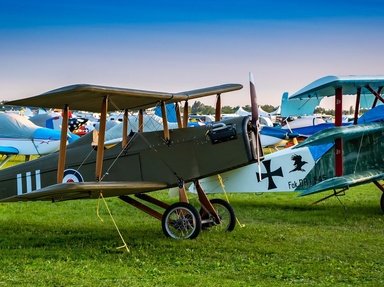Quiz Answer Key and Fun Facts
1. France had the second highest ace during the First World War. Who shot down 75 enemy aircraft and/or balloons?
2. Godwin von Brumowsky was the leading ace for the Austrian-Hungarian Empire. Where was he born?
3. The British Empire used both British and Commonwealth pilots, and welcomed others as well. The top ace for the British Empire came from Canada. What was his name, which reminds me of playing chess?
4. Alexander Kazakov claimed 20 aerial victories. For which of the countries involved in the First World War was he the top ace?
5. Even a small country as Belgium had several aces. Which Belgian pilot, who shares his initials with a famous Second World War leader, shot down 37 enemy aircraft during the Great War?
6. Aristeidis Moraitinis has not made the list of the aces with 20 or more aerial victories, but he was the only ace of his country. Which country did he serve?
7. Who was the top ace for Australia? He made a large contribution for his country and the United Kingdom.
8. Francesco Baracca shot down 34 enemy airplanes before being killed in action. For which air force was he the top ace?
9. The USA joined the Great War only in April 1917. Which American fighter pilot was credited with 26 victories, the only American to shoot down more than 20 flying objects during the Great War?
10. The top ace of the Great War was nicknamed "the Red Baron". But one of his brothers was also an ace for the German Empire. Which of the Red Baron's brothers was credited with 40 victories?
Source: Author
JanIQ
This quiz was reviewed by FunTrivia editor
trident before going online.
Any errors found in FunTrivia content are routinely corrected through our feedback system.
